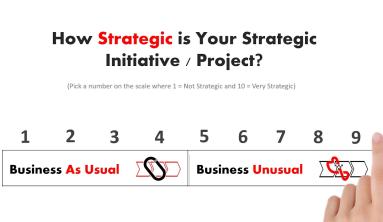If you’re not familiar with continuous improvement (CI), it may sound like a soft goal — something nice to do, but not very clearly defined. Actually, CI is a very real and effective methodology for driving major long-term and sustainable improvements. Teams can initiate and achieve success in this area by abiding by the following specific principles of continuous improvement:
The 12 Principles of Continuous Improvement Practices:
1. Define how work is being done
It seems unbelievably simple, but the reality is that many organizations face a common challenge: they don’t know how work is being done in their companies. And unfortunately, you can’t improve the work if you don’t know what that work is or what it looks like.
Therefore, any continuous process improvement initiative hinges on the effort you put into discovering, documenting, and digitizing your workflows to create a baseline and visualize how work is performed. Only then can you get started on process improvement.
2. Define your desired outcome and understand your problem
Engaging in continuous process improvement with success demands structure. Improving a process for the sake of it will not yield the outcomes that deliver tangible, measurable results.
You must define your desired outcome and understand the problems with a given process before making any modifications. Do you want to increase execution speed? Improve execution quality? Reduce errors? Etc.
Identifying what you hope to accomplish via process improvement and rectification is the only way to drive the benefits you want to achieve.
3. Set Goals, Incorporate Feedback, and Deliver Reinforcement
Organizations generally have annual or long-term goals for overall results; to some extent, annual compensation ties to the achievement of those goals. However, to engage in continuous improvement, set short-term goals or project objectives related to behaviors or results.
As each of these short-term goals are achieved and reinforced, intrinsically or extrinsically, participants are motivated to do more. As a result, continuous improvement becomes a self-reinforcing cycle. Success breeds success.
4. Connect your process improvement initiatives to bigger business objectives
Beyond just structure and a strategic approach, continuous process improvement, like any other business initiative, requires executive buy-in and sponsorship.
Even at the granular process level, process improvement should always be connected to the overarching business objectives like cost reduction, increases in efficiency, digital transformation, etc., to justify the effort and demonstrate explicit, tangible results.
5. Make process improvement customer-centric
It’s always a good practice to put your customer at the center of everything you do. Improving the customer experience should always be a high-level business objective, so while this is similar to principle #3, it warrants its own section.
In this context, the customer can be internal customers, your shareholders, or the external users/consumers of your output. Whatever the case, any small, incremental changes you make to processes should be tied to how they benefit the customer.
6. Make Subject Matter Experts and Process Owners a vital part of continuous process improvement
The knowledge of those who execute and own the processes is integral to any continuous process improvement initiative. Their collaboration shouldn’t just be limited to the definition phase of process excellence—it should also be a key part of identifying the problem and defining the solution, leading directly into the next principle.
7. Empower employees and use their ideas
The process owners and the employees executing those workflows know the process best. They should always be involved in helping process analysts understand the problems with the process and especially collaborating with them to find ways to improve the process.
Simply asking, “How would you improve this process or this step of the process?” could elicit the minor adjustments that produce significant returns without the big lift in analysis. Leaning on them also makes the SMEs and process owners more engaged in continuous process improvement and facilitates their buy-in, eliminating employee resistance when it comes to implementing modified processes.
8. Utilize Fact-Based, Measurable Methods and Monitoring
Continuous improvement is not just trying hard or giving 110%. No matter how often you hear that expression, it’s still ridiculous; a person simply cannot give 110%. When you make continuous improvement changes, you need to measure where you started and where you have arrived to show that you really have made an improvement.
If desired results are achieved, continue and make improvements permanent. If not, assess and modify as needed to get on track. Continuous improvement enables experimentation with control. Ideally, continuous improvement efforts show visible and immediate results. When possible, quantify and monetize the results to demonstrate the value of the work to the overall organization.
9. Focus on incremental improvements over mass change
One common misconception about continuous process improvement is that it’s about massive changes, and that’s not the case at all.
Continuous process improvement relies on small, incremental changes that move processes towards excellence. There are several reasons why small changes are more beneficial than larger, wholesale ones:
- Small adjustments can lead to big benefits.
- Small changes take less time to make and are thus less expensive and quicker to apply, leading to faster returns.
- Small changes offer constant assessment, providing the ability for course correction as needed.
- Sometimes big problems need small solutions.
- Employees are more willing to adapt to small changes instead of major ones
- Small levels of change enable a faster rate of change, so outcomes can stay ahead of technology or other considerations that are also transforming.
- Because continuous improvement is exactly that—continuous, small changes will amplify over time, producing better and greater results over the long term
- It’s easier to correct a small change that doesn’t work or produce the results expected than it is to reconcile a big change.
10. Continuous process improvement is never-ending
Continuous process improvement is synonymous with the Kaizen principle, where small, endless changes will yield significant ongoing business benefits.
When a singular process is improved, it must be revisited in the future and have further improvements applied to it to maintain momentum and continue the process of never-ending operational excellence.
11. Measure, monitor, repeat
Like any other business activity, continuous process improvement must be measured and monitored to ensure its intended returns and benefits are being realized.

The small incremental changes applied to your processes must be assessed and scrutinized continually. To that end, Blueprint’s Business Transformation Platform provides the rich dashboards and analytics you need for continuous process improvement and process analysis that delivers results.
12. Incorporate Teamwork
Although individuals can (and do) have continuous improvement successes, the team environment is ideal for maximum CI achievements. Synergy of ideas, shared accountabilities, social reinforcement, and even healthy competition can drive teams to achieve that self-reinforcing cycle.
When thinking about continuous improvement, we can take advice from the great quality guru W. Edwards Deming, who said that learning and improving on a regular basis are essential to survival. But, the concept of continuous improvement isn’t limited to industry or science. Paraphrasing the esteemed artist, Vincent van Gogh: “Great things are done by a series of small things brought together”.




![[INFOGRAPHIC] The 12 Agile Principles](/sites/default/files/styles/style_383_222/public/2022-09/2022-09-22_22-29-58.png?itok=VVRsgf2U)
